Spring is finally here up in the snowy northlands. With temperatures hovering around 0°C and only slated to grow warmer, we can expect a whole bunch of green very soon.
If you live anywhere close to a forest, or near private land that is forested, now will be your chance to get a whole bunch of good, fresh, delicious food for absolutely nothing.
Gathering food from the woods has been a part of humanity for generations back, so why not try your hand at it? Fresh food, the way nature intended, at the price nature intended (i.e., sweat, not money). What’s not to like? Even here in relatively metropolitan Southern Ontario, we have plenty of wild things to gather.
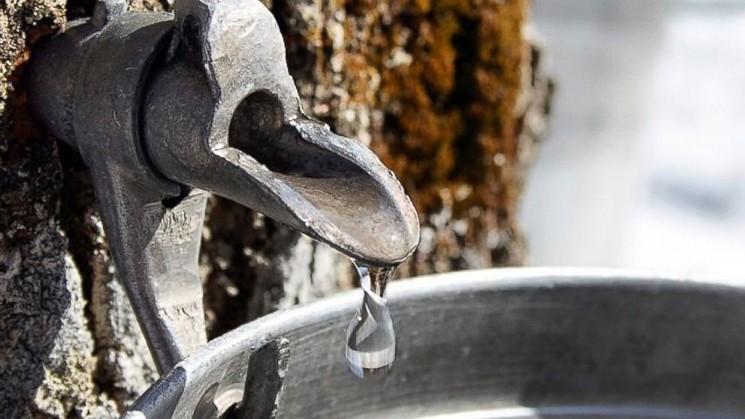
Photo courtesy of @drinkmaple on Instagram
Before we begin our little tutorial, a few quick words on safety and legality. First of all, you should wash and cook anything you forage thoroughly before eating it. There may be some things growing in the food in the woods that aren’t present in the food we’re normally used to eating, especially in aquatic plants.
Cooking or pickling will kill these things. Washing will remove any pesticides or other yucky additives that may be on the plants. I’m not saying don’t eat food fresh from the woods, and I’m not saying you’re gonna get sick from doing so, but I will say you will definitely not get sick if you wash and cook what you gather.
Second, for the love of all gods check that foraging is legal in your area before trying it out. Privately owned land that you have permission to forage on is ideal. Otherwise, check local laws on gathering in public areas, just to be safe.
Where I’m from, there are Saskatoon berry bushes right outside our city hall that are available to gather from, and city employees often buffer their lunches with them. Meanwhile, there are places where gathering rainwater is illegal. Know your laws, and act accordingly.
All right, legal mumbo-jumbo out of the way…Let’s see what we can find, shall we?
Look Down
Ramps (Wild Leeks)
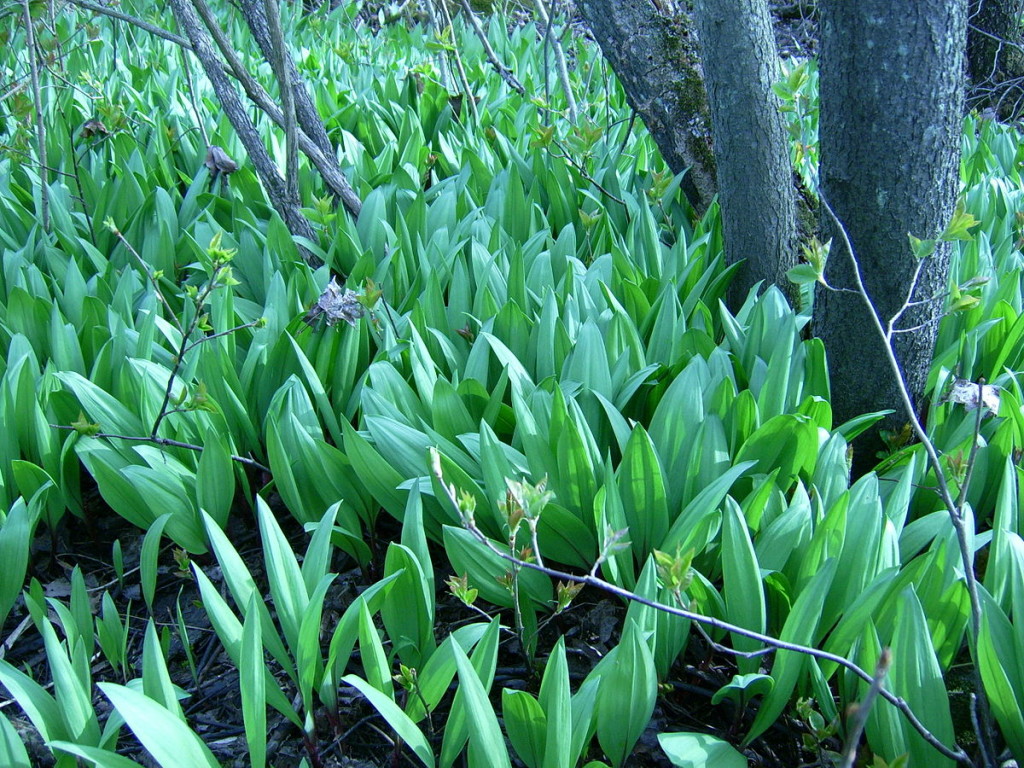
Photo courtesy of Wikimedia Commons
These beautiful green shoots will come up sometime around April, and they last for maybe two weeks, so get on it. They usually grow on forest floors in temperate zones (such as my own balmy Guelph, Ontario). Their two bright, solidly green leaves and reddish stalks tend to bathe the forest floor in green.
Don’t be fooled by lookalikes – these solid green leaves have no patterning and smell like onion with a touch of garlic when crushed. That’s the real deal.
Gently uprooting them reveals the fleshy white bulb below. Don’t be tempted to take too many, however. Only gather from large, well-established clumps, and take no more than about a third of what’s in the clump so that it can replenish for next year’s bounty.
You can use these immediately as you would green onions or leeks, or you can pickle the stalks for later consumption. The leaves of wild leeks are far more tender than any of its culinary relatives, so feel free to use them whole or julienne them for a salad, marinade, or one awesome bowl of ramen.
The flavour is somewhere between onions, leeks, and garlic scapes, and a little less intense than all of them. Swapping in the leaves or bulbs into any recipes that includes leek or onion (including this one) is both a good starting point and an excellent way to use up this lovely ingredient.
Garlic Mustard
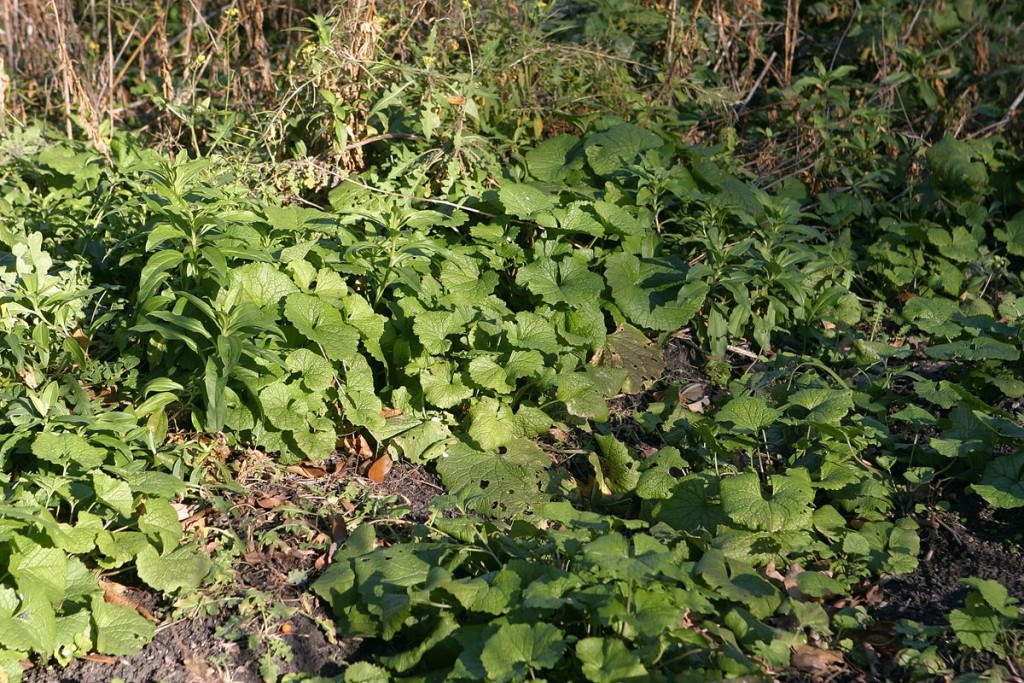
Photo courtesy of Wikimedia Commons
Along the same lines, this wildly invasive plant with an S-shaped root and a heavily garlicky scent to the leaves and flowers can be found in most places. Unlike ramps, however, don’t worry about how much you take – removing as much as possible from a given area will actually benefit the local ecosystem diversity as these guys prevent anything else from growing where they grow.
The leaves and flowers can be used in place of garlic in a lot of preparations, and can easily add a garlicky flavour to a lot of dishes that normally couldn’t stand up to the powerfully pungent bulb. They do err on the bitter side should the flavour get too intense, so exercise restraint.
The root, interestingly, tastes more like horseradish than anything else, so you can chop it finely and use it anywhere you could use horseradish: sauces, marinades, or really, really good sandwiches. Chimichurri, a sauce that goes well with all sorts of beef and pork dishes, such as a fancy steak dinner just becomes more beautiful by swapping this in for garlic.
Fiddleheads
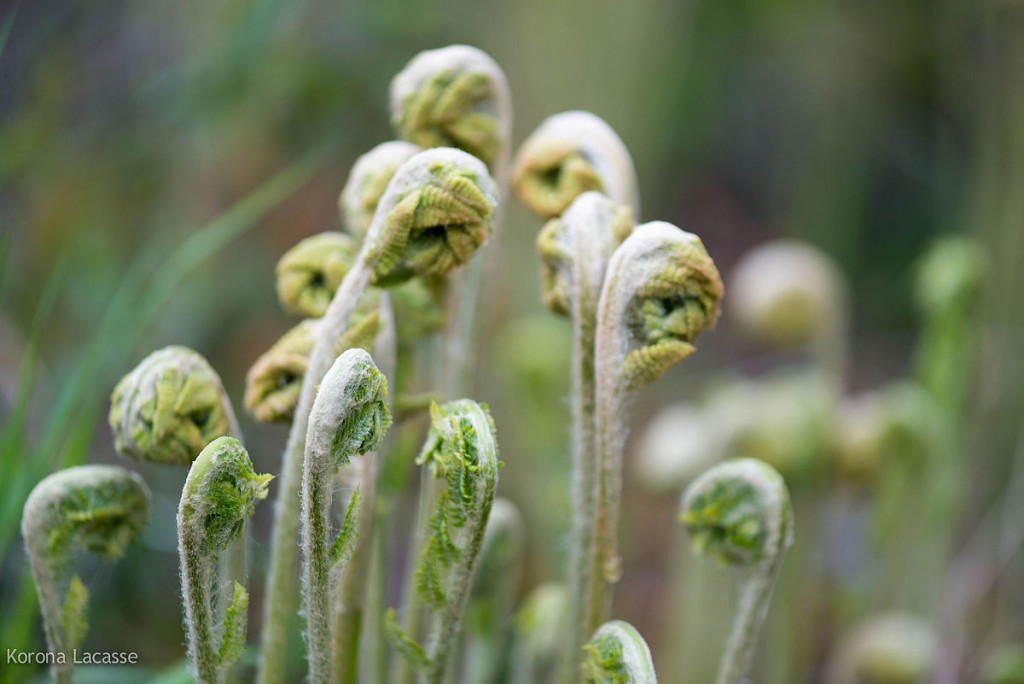
Photo courtesy of Wikimedia Commons
Normally, you can’t eat ferns, except for in the early spring when these plants are just sprouting and haven’t yet developed the compounds that make them inedible.
You’ll find these near creek sides and on or near very wet soils. Only go for the ones that are still entirely curled up, otherwise, you might get a slight bellyache. Additionally, ensure you leave at least three intact stems on each fern, preferably four. Any fewer than that will kill the fern.
With a unique crunch and a taste like asparagus, (if asparagus was about thirty times better than asparagus) these guys can be used in a variety of creative dishes. My personal favourite way to cook them is in a hot frying pan with a little salt, a bit more pepper, and even more butter.
Look Up
Sumac Berries

Photo courtesy of Wikimedia Commons
You’ve probably seen those bundles of furry red berries that grow near roads and as shrubs in many different areas. The berries are small and hard, covered in a sticky red fur. If you rub your hands against them and taste the residue they leave behind, it should taste like sour candy.
Try not to take any more than a few bunches off a single tree, and only if there’s plenty remaining on it. Aim for the ones that still look full and bright, bright red.
Sumac berries can be dried out, crushed, and used in a za’atar herb blend to add a complex and delicious savoury-sour flavour to your cooking. Alternatively, dry these suckers out and blend them up with some spices you have yourself – get fancy.
They can go anywhere lemon can, and further still. Boiling these berries and then letting the resulting tea chill makes a delicious and low-sugar alternative to lemonade.
Mix in equal parts sugar and bring to a boil for a bit to create a nice sumac syrup you can pour over pancakes, waffles, cakes, or directly into your mouth, your call. Maybe try swapping sumac in for the citrus aspect of some of these tropical drinks.
Spruce Tips
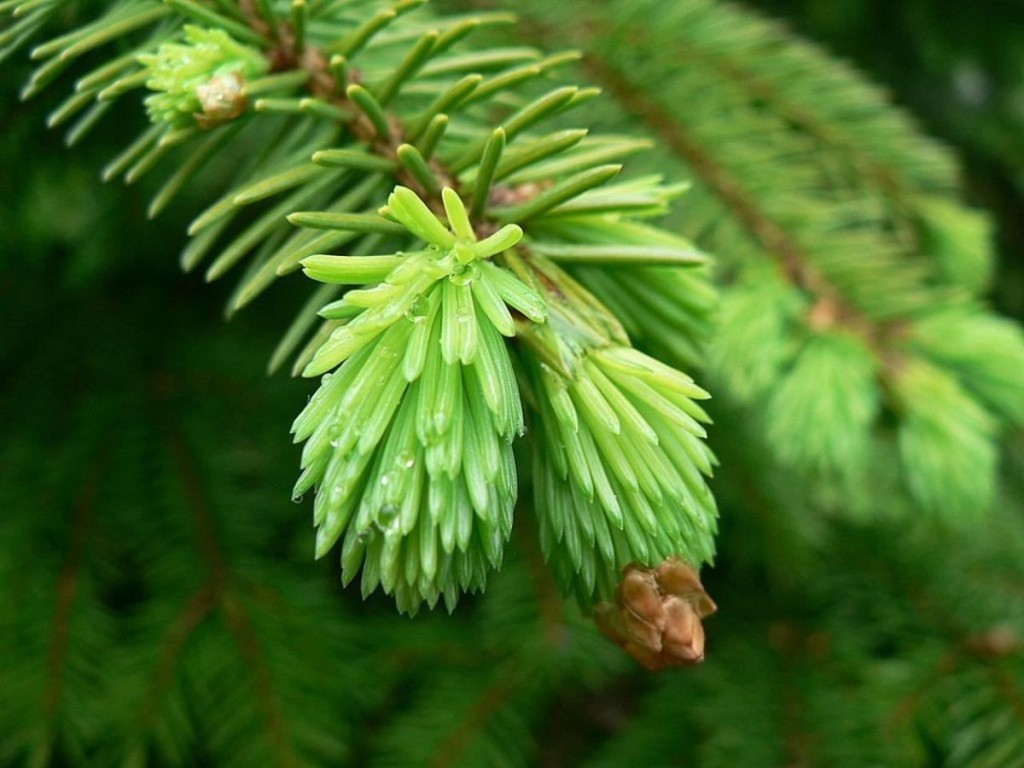
Photo courtesy of Wikimedia Commons
Springtime is the time when trees of all stripes start growing again. Spruce trees are no exception, and you’ll be able to see the terminal buds on the ends of each twig sprout a new batch of needles.
Tea made from spruce is warm, refreshing, and as Canadian as it gets, but there are way more things to do with spruce tips than just boiling them.
You can also mix 1 part sugar with 1 part water and a whole bunch of spruce needles (fresh or old) and boil the whole mix, creating a syrup that can be mixed into a bunch of different drinks. The syrup is delicious on its own with some soda, but adding it to gin and tonics, mojitos, or berry drinks like this blackberry gin fizz will take both the syrup and the drink to the next level.
Get Your Feet Wet
Cattail Shoots
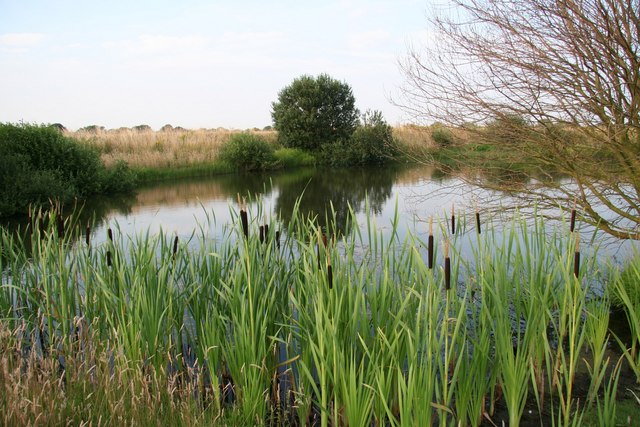
Photo courtesy of Wikimedia Commons
Yes, cattails are edible. Yes, they are delicious. Cattails, bulrushes, whatever you want to call them, they’re delicious, numerous, versatile, and recognizable, and they start shooting up out of the mud in mid-spring.
In late spring and through till autumn, the texture of cattail shoots is pithy, while in early spring the new shoots are nice and refreshingly crunchy, turning to the texture of perfectly cooked okra when cooked. The raw flavour is similar to cucumber (but we don’t endorse eating it raw) while cooked cattail shoot tastes very similar to corn. These can be used cooked and chilled in salads, or cooked into soups and chilis like this one in place of or in addition to corn.
Watercress
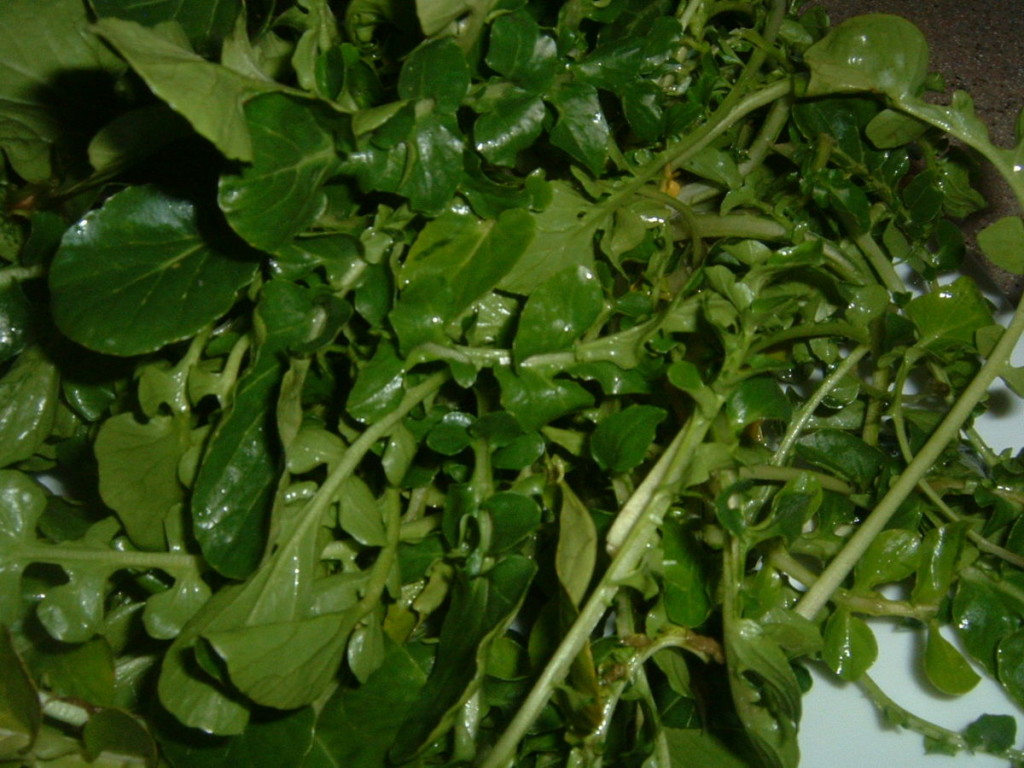
Photo courtesy of Wikimedia Commons
You can buy this stuff for top dollar at a grocery store, or you can find it growing in streams for free! Ah, the joys of foraging.
This lovely little green has a fresh, leafy flavour similar to spinach or arugula when it’s fresh, and a more kale-esque flavour when served cooked. As with the other aquatic item on this list, ensure that you cook it thoroughly, as this plant is particularly sensitive to any sort of unwanted parasitic beastie.
Cook it up in stews, cook it and freeze it into cubes for later usage, blend the cooked greens into a smoothie…the world is your oyster.
Get Creative
Burdock Seeds, Roots, and Leaves
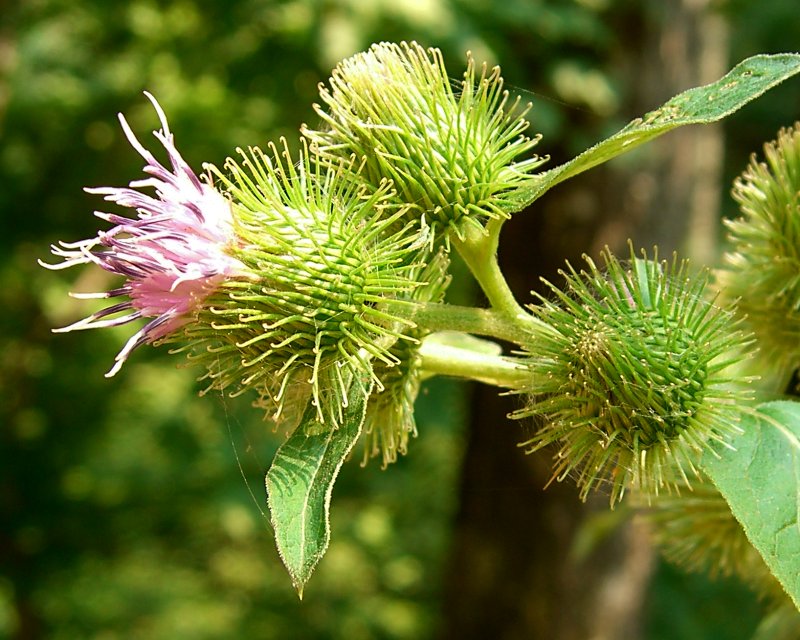
Photo courtesy of Wikimedia Commons
Yes, burdock. Those things that get stuck on your sweaters, and in animal fur, and literally everywhere else are 100 percent edible. The young leaves can be eaten in salads like any other leafy green, and the roots are starchy, like a potato, and it can be prepared in much the same way.
The seeds are also edible though you’ll have to crack open some old burrs to get inside. The other issue is that grubs like to take up residence inside these seeds. Winter storage, one could say. These grubs are coated with a layer of glucose, acting as a sort of antifreeze as a proof against winter’s chill.
Those grubs? Also edible. Vaguely sweet and savoury, too, if you can get over the fact that you are literally eating bugs. If you can’t, avoid the seeds and stick to the leaves and root, both of which work very well in stews, like this one.
Maple and Birch Sap
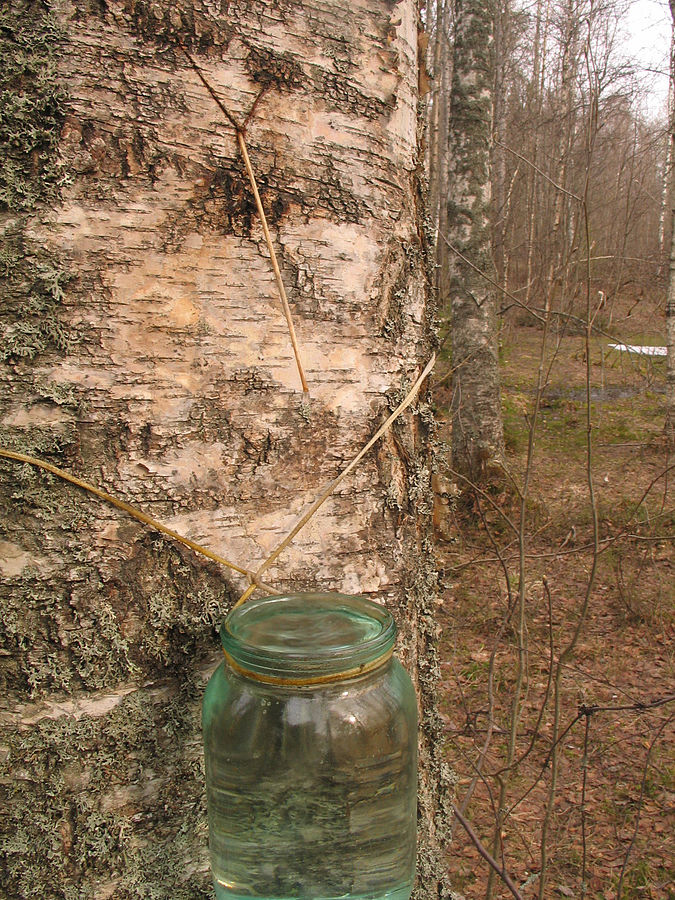
Photo courtesy of Wikimedia Commons
Okay, everyone knows about maple sap, though you’ll need a particularly open-minded landowner who’d be willing to help you with this endeavour but the result is so worth it. Homemade maple syrup is delicious (better than anything you can buy) but even just the pure sap makes a tasty and thirst-quenching drink. Not unlike coconut water in that regard.
Birch trees are less known for their sap and the resulting syrup, potentially because you need a great deal more of it to produce an equivalent amount of syrup. Sugar maple sap needs to reduce until it’s 40 times less than the original amount while birch sap must be 60 times less.
The result, though, is very interesting, and unlike any syrup you’ve tried before: rich, oaky flavours and a sweetness not unlike the kind you’d find in organic or traditional root beer.
The preparation for these is simple enough: gather the sap while the nights dip below zero and the days go above, and then boil until it’s sweet and sticky. If you want to, you can boil the sap down to a thin syrup, then add soda to make a subtly sweet spring seltzer. Or just leave the sap as is and infuse some flavours into it like you would with water.
A Quick Word: Mushrooms
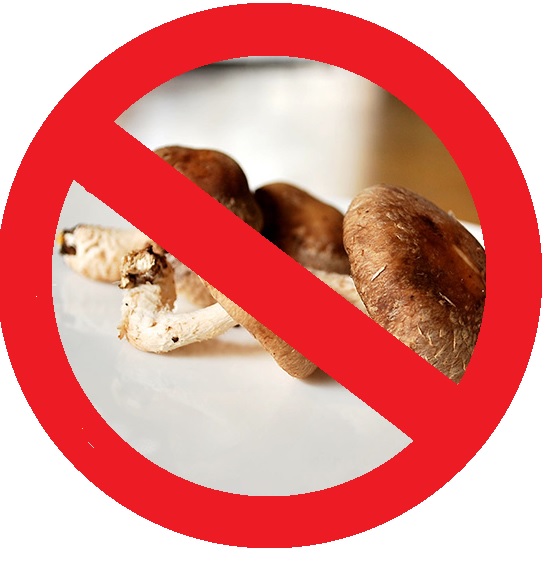
Photo by Stephanie deVeaux and Andrew Kirkconnell
Don’t. Just don’t. You may be tempted by your limited mycological knowledge to gather edible mushrooms in the wild. Until you’ve worked with someone that knows what they’re doing, it is a billion times safer to just leave them alone.
Hungry yet? Let’s go on an adventure!

